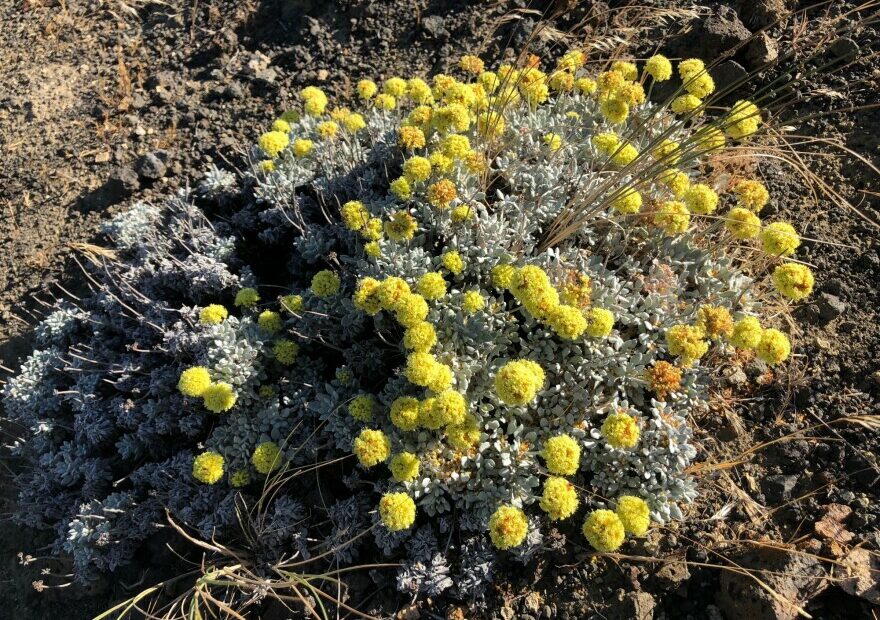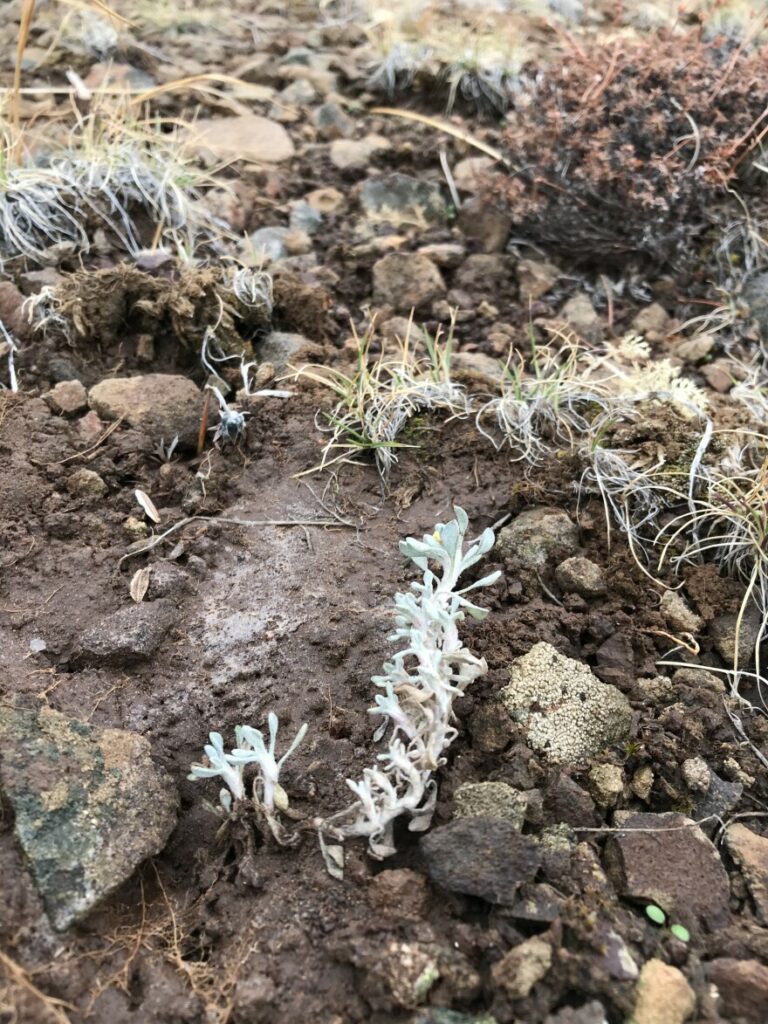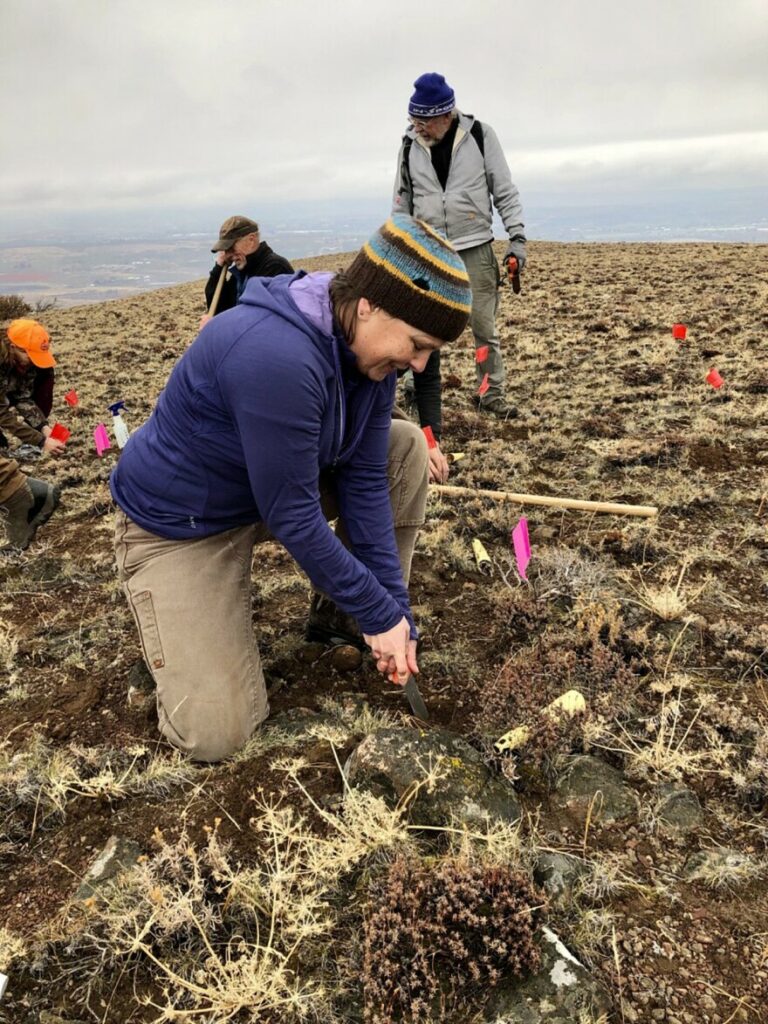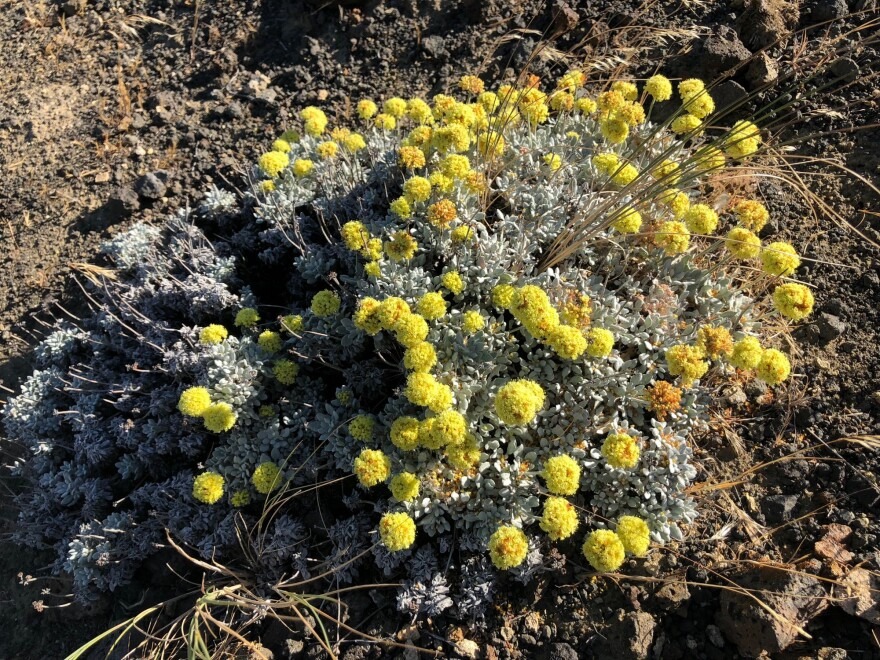
New Hope For A Rare Plant At Hanford Reach
Read
Wildfires, invasive species and climate change are seriously threatening the Hanford Reach National Monument, and with it, a rare plant that grows only in one place in the world.
This winter, a team of plant researchers is giving the Umtanum desert buckwheat new hope. Researchers and volunteers planted a second outcropping at the Cowiche Canyon Conservancy near Yakima.
Successfully growing more plantings of Umtanum desert buckwheat is critical to the survival of the threatened plant, said Tara Callaway, Washington State Recovery coordinator for the U.S. Fish and Wildlife Service.
“We literally have all of our eggs in one basket in that one spot,” Callaway said.
In 2017, the Silver Dollar Fire burned at least half of all the Umtanum desert buckwheat at Hanford Reach.
The increasing frequency and severity of wildfires in the area are particularly concerning, Callaway said. A single fire could wipe out the only Umtanum desert buckwheat in the world.
In addition, invasive species, such as cheatgrass, crowd out the Umtanum desert buckwheat. Climate change also will shrink its habitat.
“By having a second population, it provides some assurance that if disaster strikes in the form of wildfire or invasive species, the species as a whole may still persist,” Callaway said.
A lot of work went into giving the plant a head start.
[story continues below image]

A newly planted Umtanum desert buckwheat seedling at Cowiche Canyon Conservancy.
Photo courtesy of T. Callaway/USFWS Photo
Instead of planting seeds straight into the ground, the University of Washington Botanic Gardens Rare Care Program first grew the seeds into seedlings.
“We let them sit for weeks and see what combination of time, temperature and light will produce the best germination of the seed,” said Wendy Gibble, Rare Care Program manager.
Then, researchers tested different soil mixes and containers to see how the plants continued to grow best.
Moreover, east of the Cascades, the program has helped a variety of rare and threatened plants, including the White Bluffs bladderpod at Hanford Reach, the Wenatchee Mountains checkermallow, and the showy stickseed, near Leavenworth, Gibble said.
Rare plants often make up an important part of a diverse, healthy ecosystem, Gibble said.
For example, the Umtanum desert buckwheat blooms in the middle of summer, when most other plants no longer bloom, Gibble said.
“What pollinators and insects is this species supporting, through a period of the summer that’s incredibly harsh with not a lot of other nectar sources?” she said.
Rare plant species often have these types of niche purposes within an ecosystem, Gibble said.
Callaway said of the blossoms, “It’s beautiful when you stand up on the ridge at Hanford Reach, and you can see these clusters of all yellow.”
Researchers also hope the plantings will provide those unique summer blossoms at the Cowiche Canyon Conservancy.
[story continues below image]

Emily Orling, a biologist with the U.S. Fish and Wildlife Service, plants Umtanum desert buckwheat at the Cowiche Canyon Conservancy. Photo courtesy of T. Callaway/USFWS Photo
Over two cold and foggy days this winter, a group of volunteers hiked along the canyon.
Researchers planted the 246 seedlings of Umtanum desert buckwheat at a slightly higher elevation, which will hopefully protect this group of plants from climate change, Callaway said.
“We’re hoping that at this particular site it will have a little bit more moisture and will also have cooler temperatures,” Callaway said.
The volunteers dug into the rare, rocky soil. The group planted the seedlings into three different plots, Callaway said.
Although earlier attempts to plant Umtanum desert buckwheat were unsuccessful, Callaway said she hopes plants in this area eventually will survive. In earlier attempts, the soil was too rocky, she said. Wildfires also burned the area right after the plantings.
Establishing these new seedlings at the conservancy may take several years and multiple tries, but researchers have to be tenacious, Gibble said.
This spring, researchers will head back to the area to see if the plants survived the winter.
The U.S. Fish and Wildlife Service and volunteers with the Cowiche Canyon Conservancy will continue to water the plants and watch as the Umtanum desert buckwheat grows, Callaway said.
The Cowiche Canyon Conservancy owns the land where the Umtanum desert buckwheat seedlings were planted.
Umtanum desert buckwheat can grow for more than 100 years, Callaway said. In the last 20 years, Callaway said new seedlings in study areas at Hanford Reach haven’t survived until adulthood, around when the plants reach five years old.
Researchers said they aren’t sure why the seeds haven’t grown successfully. Callaway said it could be that the young plants need perfect conditions to survive.
Meanwhile, the Rare Care Program is growing more Umtanum desert buckwheat seedlings, Gibble said. The group plans to plant this batch of seedlings at Hanford Reach this fall.
“These are pretty harsh conditions where this plant lives,” Gibble said. “Sometimes you have a lot of success with some species, and with some species you have a lot of failure. You just have to keep on plugging away at it.”
Related Stories:

Why affordable housing providers say they’re facing an ‘existential’ crisis
Affordable housing providers across the Northwest have been contending with rising insurance premiums — and, in some cases, getting kicked off their plans altogether.

Pacific Northwest author’s new novel captures atmosphere of the region
On a gray, early spring morning, I drove to Steilacoom, Washington, to catch the ferry to Anderson Island. I boarded alongside the line of other cars and after parking, stepped out onto the deck of the boat. The ferry pushed off from the dock and rocked a little in the Puget Sound before steadying.
I took this journey to the real Anderson Island to see from the water what inspired Northwest author Kirsten Sundberg Lunstrum’s new novel, “Elita,” which was published earlier this year. Sundberg Lunstrum was inspired while sailing around the Puget Sound to write a mystery novel on an island.
Sundberg Lunstrum read excerpts of the book at a gathering at Tacoma’s Grit City Books.

Repentina suspensión de Head Start afecta a cientos de niños en el centro de Washington
Suspensión de los programas Early Head Start y Head Start afecta a siete Inspire Development Centers en el centro de Washington, dejando a más de 400 niños sin apoyo educativo después de que la financiación federal nunca llegara. También provocó el despido de más de 70 personas.













